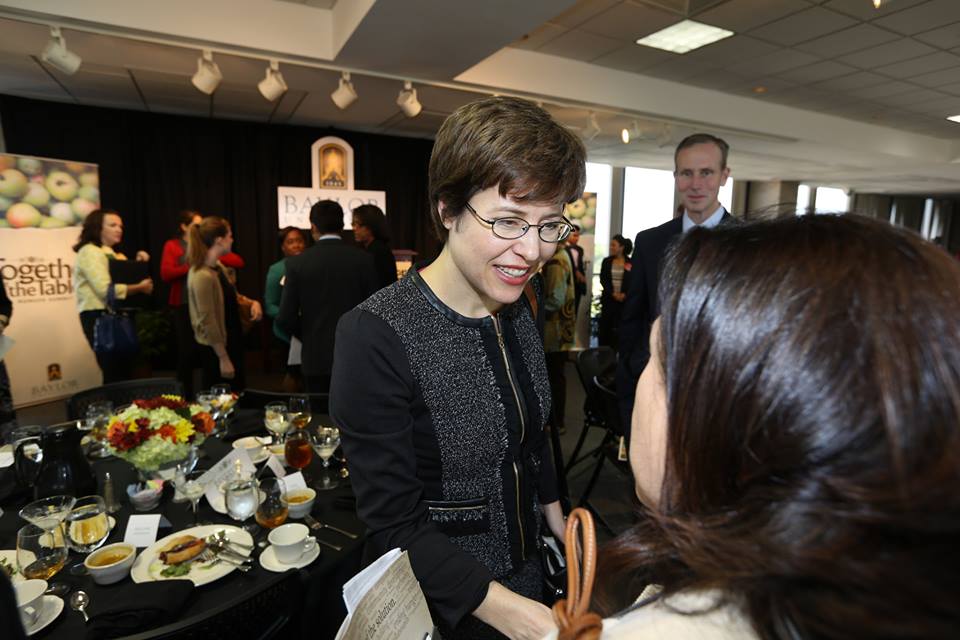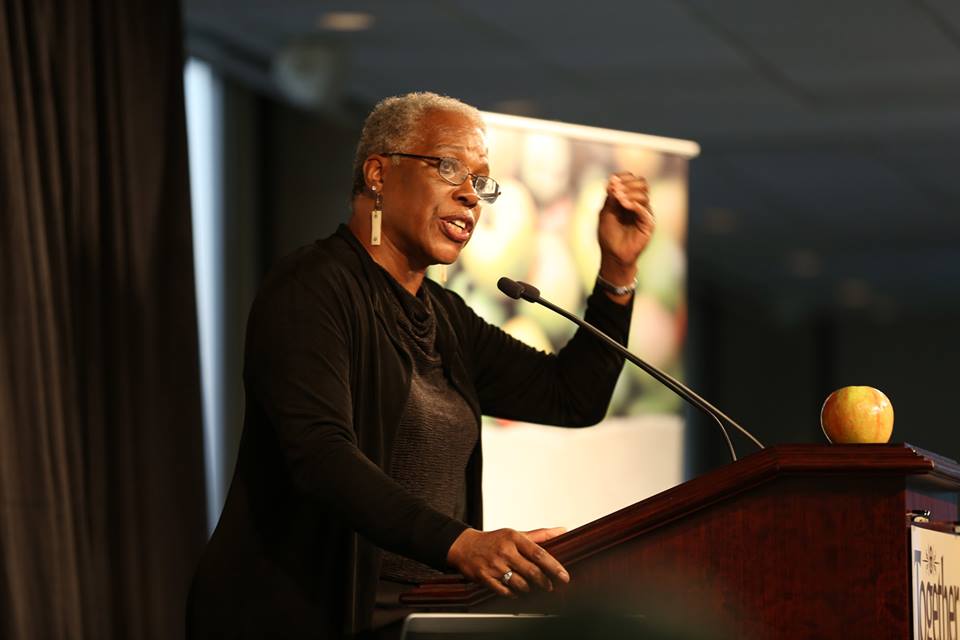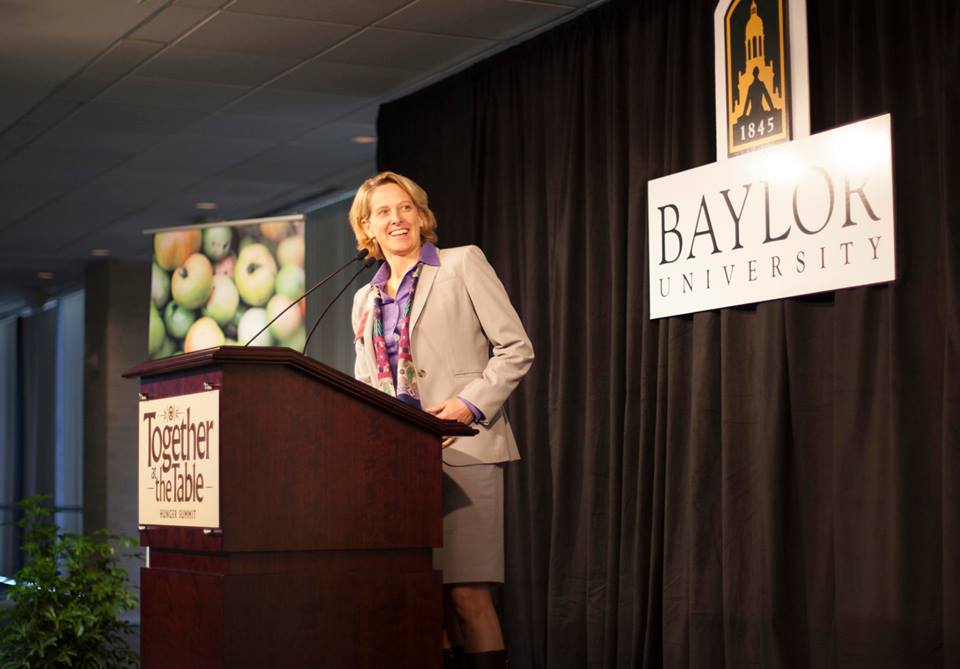 Together at the Table: Hunger Summit at Baylor University brought together anti-hunger advocates from across Texas and around the country on October 24-25, providing an opportunity to pause to assess the current state of hunger in our nation and to share and explore ways we can end it. Summit speakers and participants reflected on the successes that have been made toward ending hunger, while also looking ahead to the work that still needs to be done. It was a time to recharge and refocus on one unifying goal: to eradicate hunger in our nation in our day and time.
Together at the Table: Hunger Summit at Baylor University brought together anti-hunger advocates from across Texas and around the country on October 24-25, providing an opportunity to pause to assess the current state of hunger in our nation and to share and explore ways we can end it. Summit speakers and participants reflected on the successes that have been made toward ending hunger, while also looking ahead to the work that still needs to be done. It was a time to recharge and refocus on one unifying goal: to eradicate hunger in our nation in our day and time.
Among the many nuggets of expertise shared by the Summit’s esteemed presenters, a few shared themes continued surface throughout our time together, and we wanted to share of few of those here with our readers in hopes that you remain encouraged in your work to fight food insecurity in your schools, neighborhoods, cities and communities.
Hunger is a solvable problem—if we work together.
Sometimes we need to be reminded that the task before us can actually be accomplished.
“We do not have to live with hunger in this nation.” Joel Berg, executive director of the New York City Coalition Against Hunger, said. Berg encouraged Summit participants to view hunger as a solvable problem when working together. Hunger can be wiped out if the government and organizations on the ground truly work together to tackle the issue, he emphasized.
The need to continue building anti-hunger collaboration across sectors was a sentiment reflected throughout the Summit.
“With all of us being partners, how can we fail?” Audrey Rowe, administrator of the Food and Nutrition Service of the USDA, rallied Summit participants.
Of course, progress takes time, and the work is challenging. We, as part of the anti-hunger community, must focus not on how our organizations differ but on the shared vision to end food insecurity in our nation. We must keep our attention trained on the people we are seeking to serve and support.
Hunger is a symptom of a greater problem—poverty.
Participants at the Summit were left inspired and informed, but also with a charge to look at hunger as part of the larger issue of poverty in America. Many of those considered food insecure are doing all they can to better their financial situation. But often, the desire to be self-sufficient is not enough when complications outside of their control come their way. Many are struggling to take any jobs they can, often with little pay, just to make ends meet. But these “non-standard work hours and low pay are a recipe for food insecurity,” Dr. Mariana Chilton, director of the Center for Hunger-Free Communities and associate professor at Drexel University’s School of Public Health, said.
Individuals who are financially insecure know they need education to improve their lives, but the cost of that education would plunge them into greater debt. Although they may not wish to, many rely on government benefits, such as SNAP, WIC, and cash welfare out of necessity.
Many want to break the cycle of poverty. They want off of SNAP benefits. They want off of welfare, off of housing subsidies. They want a better, more self-sufficient life for themselves and their kids. However, there are complications to breaking the cycle of poverty. Often, when families work to earn more, they lose benefits that they still need in order to get back on their feet.
“What happens when families are doing what they’re supposed to do—earn more money to get off the system? Prompted families earn a little bit more, and they lose their SNAP benefits, their children are actually more likely to be in poor health and experience hunger. It’s kind of counterintuitive,” Dr. Chilton said.
“It’s time to shift the discussion surrounding hunger in this nation,” Audrey Rowe added. “The conversation shouldn’t be about SNAP. It should be about minimum wage and poverty.”
The power of personal stories: changing the “narrative of hunger”
At the heart of the issue and the statistics surrounding hunger are real people and real families. It’s the stories of their struggles that paint the most accurate, raw picture of hunger in America. These stories have power to create change. Celia Cole, CEO of the Texas Food Bank Network, said during her breakout session that TFBN would be implementing a story bank in the coming months and years. Dr. Chilton told us of the women of Witnesses to Hunger, who tell their stories directly to the media and legislators.
“When the women get together, they are a force—a force to be reckoned with. They are pure power. They are greater than the sum of their parts,” Dr. Chilton said.
But the anti-hunger community needs to do more than listen and broadcast these stories. Those experiencing hunger likewise need a place at the table. We need to engage and partner with them.
“We need to change the narrative of hunger,” Kathy Underhill, executive director of Hunger Free Colorado, said.”
To change the narrative, it’s going to take innovative strategies and risks. We must be willing to innovate and put ideas into action. “I think you get to decide what Texas will look like,” Underhill said.
It’s time to change the story of hunger and poverty in our state and in our nation, but we must work together to transform the narrative.
Trading knowledge leads to best practices (and more success) in fighting hunger.
To best serve those in need, we must discover the strategies and practices that have been proven to work well. Our hope is that the Summit continues to serve as a think-tank atmosphere for the anti-hunger community, bringing together individuals, nonprofits, corporations and government offices that are all tackling the issue of hunger in different ways and from different angles.
This year, the Summit offered eight different tracks on a variety of topics, including public policy, research & data, childhood hunger, health & nutrition, and more. Participants had a chance to explore the issue of hunger and how to address it from an assortment of professional perspectives.
“There was incredible energy in those rooms,” Keven Vicknair, vice president of Strategic Thought at CitySquare, said. “At least for us, it was a catalyst event that could lead to many new ventures.”
Thank you to all of the dedicated anti-hunger and anti-poverty advocates who attended and/or presented at this year’s Together at the Table: Hunger Summit. We, at the Texas Hunger Initiative, are encouraged by your commitment to a common goal for the common good. Here’s to making huge strides of progress together in the coming year!
__________________________________
Written by: Ashley Yeaman & Christina Farjardo, Communications Coordinator and Communications Intern, Texas Hunger Initiative
Photos by: Baylor University Copyright © 2013 (Melissa Rogers and Audrey Rowe) & Christina Fajardo, Communications Intern, Texas Hunger Iniaitive (Dr. Mariana Chilton)

